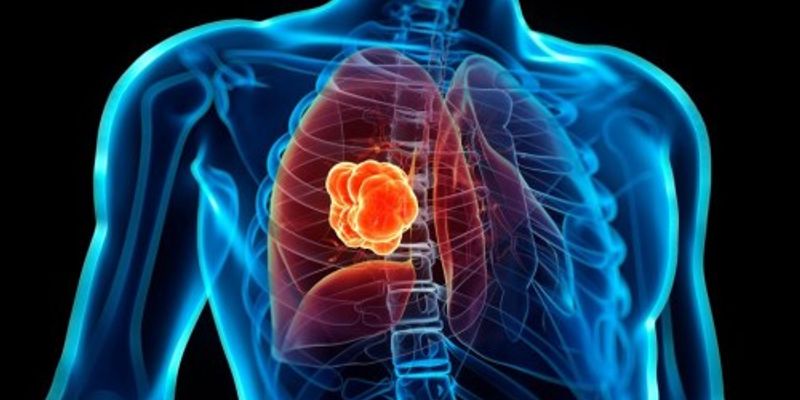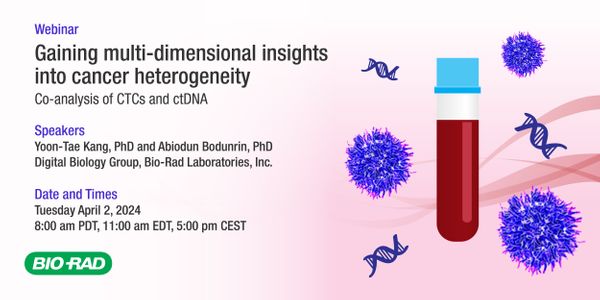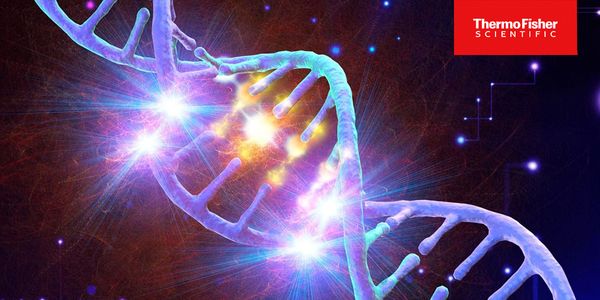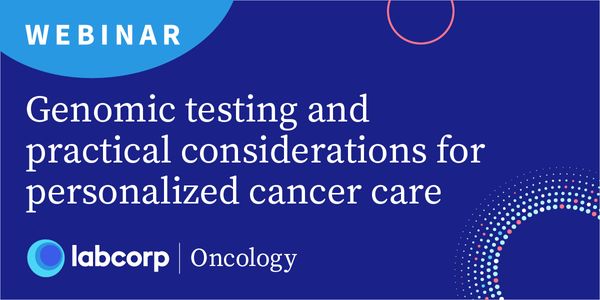Lung Cancer
Lung Cancer: is a cancer that ignites in the lungs and most often exist in people who smoke. Two major types of lung cancer are non-small cell lung cancer and small cell lung cancer. The roots of lung cancer include smoking, secondhand smoke, exposure to certain toxins, and family history. The treatments vary but may include surgery, chemotherapy, targeted drug therapy, radiation therapy, and immunotherapy.
-
Non-small cell lung cancer (NSCLC) accounts for more deaths than colon, breast, and prostate cancers combined. Of patients with NSCLC, 20% initially present with stage I or II disease, for w...
APR 23, 2025 | 1:00 AM
Finding the right predictive and prognostic biomarkers is essential for improving cancer treatment. In this 30 min webinar, we’ll explore how NGS proteomics, combined with genomics , p...
Circulating tumor cells (CTCs) and circulating tumor DNA (ctDNA) have each gained attention as promising liquid biopsy markers, offering molecular insights into cancer progression, overall s...
Speaker:
Abiodun Bodunrin, PhD
, Yoon-Tae Kang, PhD
Presented at: Precision Medicine: Genomics, Genetics & Molecular Diagnostics Virtual Event Series 2024
Sponsored By: Bio-Rad Laboratories
Sponsored By: Bio-Rad Laboratories
APR 02, 2024 | 8:00 AM
Circulating tumor cells (CTCs) and circulating tumor DNA (ctDNA) have each gained attention as promising liquid biopsy markers, offering molecular insights into cancer progression, overall s...
Current cancer research is hindered by the limitations of existing experimental systems, which fall short in demonstrating concordance with human studies. In this way, we aim to develop mode...
Speaker:
Huanhuan Joyce Chen, PharmD PhD
Presented at: Drug Discovery & Development Virtual Event Series 2024
FEB 15, 2024 | 8:00 AM
Macrophages can mediate phagocytosis of cancer cells and cytotoxic tumor killing, and engage in effective bidirectional interactions with components of the innate and adaptive immune system....
Pathology Perspective: Discover the critical need for genomic testing in cancer and explore the differences between traditional tissue biopsies and liquid genomic profiling. We'll dive i...
Speaker:
Dr. Shuko Harada
, Dr. Aakash Desai, MBBS, MPH
Presented at: Precision Medicine in Solid Tumors
NOV 29, 2023 | 9:00 AM
Tumor genomic profiling can be complicated, especially for diseases that commonly have multiple different genomic biomarkers of interest, such as non-small cell lung cancer (NSCLC) and color...
OCT 26, 2023 | 8:00 AM
In the era of advanced biotechnology, automation plays a crucial role in accelerating cancer research. Next-generation sequencing (NGS) technology has revolutionized cancer research, but lab...
Speaker:
Nicholas Lodato, Ph.D.
, Enrique Neumann, Ph.D.
Sponsored By: Beckman Coulter Life Sciences
OCT 11, 2023 | 9:00 PM
Epigenetic modifications such as DNA methylation have long shown promise as potential biomarkers to diagnose and guide treatment of many human diseases, including multiple types of cancers....
Speaker:
Dr. Lucia Anna Muscarella, Ph.D.
, Dr. Cristina Guillén, Ph.D.
Sponsored By: Thermo Fisher Scientific
OCT 10, 2023 | 10:00 AM
For patients with advanced non-small cell lung cancer (NSCLC), tissue samples are typically small biopsies. These samples undergo standard of care evaluation for >10 biomarkers to identif...
SEP 13, 2023 | 10:00 AM
Liquid biopsy is an emerging area of clinical research, particularly in the context of cancer. As a minimally invasive complementary or alternative approach to tissue biopsies, liquid biopsi...
Speaker:
Dr. Eloisa Jantus Lewintre, PhD
, Dr. Gorka Alkorta-Aranburu
, Matteo Allegretti, PhD
Presented at: The Future of Cutting-Edge Genomic Technologies for Liquid Biopsy Cancer Research
Sponsored By: Thermo Fisher Scientific
Sponsored By: Thermo Fisher Scientific
September 13 at 10:00am CEST, 9:00am BST
Webinar airing too early or too late for you? This webinar will also be available: September 13 at 10:00am PDT, 1:00pm EDT https://www.labroots.com/ms/webinar/dpcr-liquidbiopsy-panel-2 and S...
Speaker:
Dr. Eloisa Jantus Lewintre, PhD
, Dr. Gorka Alkorta-Aranburu
, Matteo Allegretti, PhD
Presented at: The Future of Cutting-Edge Genomic Technologies for Liquid Biopsy Cancer Research
Sponsored By: Thermo Fisher Scientific
Sponsored By: Thermo Fisher Scientific
September 13 at 9:30am IST, 12:00pm CST/SGT
Liquid biopsy is an emerging area of clinical research, particularly in the context of cancer. As a minimally invasive complementary or alternative approach to tissue biopsies, liquid biopsi...
Speaker:
Dr. Eloisa Jantus Lewintre, PhD
, Dr. Gorka Alkorta-Aranburu
, Matteo Allegretti, PhD
Presented at: The Future of Cutting-Edge Genomic Technologies for Liquid Biopsy Cancer Research
Sponsored By: Thermo Fisher Scientific
Sponsored By: Thermo Fisher Scientific
Lung cancer is still responsible for most cancer-related deaths for both genders in the United States. Traditionally, diagnosis and management of patients has been based on tissue biopsy to...
Many oncology patients do not receive the most effective targeted treatments because of challenges associated with implementation of a personalized medicine approach. Despite a lengthy histo...
...
Speaker:
Fernando López-Ríos, MD, PhD
Presented at: OncomineWorld 2023: A Virtual NGS Education Meeting
...
Speaker:
Fernando López-Ríos, MD, PhD
Presented at: OncomineWorld 2024: A Virtual NGS Education Meeting





















